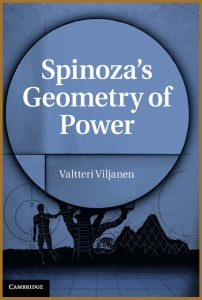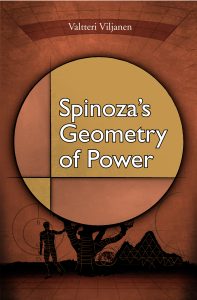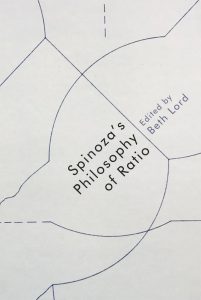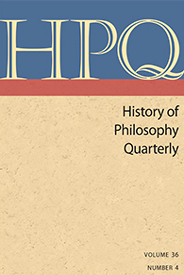Valtteri Viljanen
Cambridge: Cambridge University Press, 2011 (Paperback 2014)
This work examines the unique way in which Benedict de Spinoza (1632–1677) combines two significant philosophical principles: that real existence requires causal power and that geometrical objects display exceptionally clearly how things have properties in virtue of their essences. Valtteri Viljanen argues that underlying Spinoza’s psychology and ethics is a compelling metaphysical theory according to which each and every genuine thing is an entity of power endowed with an internal structure akin to that of geometrical objects. This allows Spinoza to offer a theory of existence and of action – human and non-human alike – as dynamic striving that takes place with the same kind of necessity and intelligibility that pertain to geometry. Viljanen’s fresh and original study will interest a wide range of readers in Spinoza studies and early modern philosophy more generally.
Available Resources
Reviews
“Viljanen rescues Spinoza’s metaphysics from interpreters who push too hard in domesticating his radical ideas. In building his interpretation, he makes excellent use not only of Spinoza’s text, but also of scholarship in medieval philosophy and contemporary metaphysics. The breadth and depth of his study are impressive.”
Charlie Huenemann, Utah State University
“[T]his book gives the most detailed and insightful account of the way in which geometry guides Spinoza’s metaphysics … One of the great virtues of Viljanen’s rich and sophisticated book is that, without going over this precipice, it brings us to the brink of taking this last momentous, wonderful, and perhaps terrifying step.” [Full review.]
Michael Della Rocca, Yale University, Notre Dame Philosophical Reviews
“Spinoza’s Geometry of Power will appeal to a broad audience. It will serve as a clear, thorough, and succinct introduction for those unfamiliar with Spinoza’s views on power, geometry, and essence. It will also inform and stimulate the expert. I highly recommend it.” [Full review.]
John Morrison, Barnard College, Columbia University, British Journal for the History of Philosophy
“Viljanen’s book will have … an important role in the contemporary debate on Spinoza’s thought. The author succeeds in questioning some of the most established interpretations of Spinoza’s philosophy, and provides convincing readings of some of the interpretative issues debated in contemporary Anglophone scholarship … Viljanen offers probably the most complete reconstruction of the conatus argument so far[.]” [Full review.]
Rodolfo Garau, University of Turin, translated from Rivista di filosofia
“[O]ne of the most impressive features of Viljanen’s book is that it demonstrates that acknowledging Spinoza’s orientation toward geometry and his rationalist conception of powers sheds light on some of his deepest and perhaps even darkest philosophical contentions … Viljanen provides a highly unified and fascinating picture of Spinoza’s philosophy, in which truths about human psychology naturally flow from metaphysically basic assumptions about the intrinsically powerful make-up of the universe … Spinoza’s Geometry of Power is an extremely valuable contribution to the Spinoza scholarship, which reveals the pivotal role of the notion of power in Spinoza’s philosophy that has so often been overlooked … it is to be hoped that Viljanen’s method of approaching Spinoza, in light of his immediate scholastic predecessors, sets an example for the study of other early modern authors as well[.]” [Full review.]
Stephan Schmid, Institut für Philosophie, Humboldt-Universität zu Berlin, Archiv für Geschichte der Philosophie
“In this book, Valtteri Viljanen develops a very lucid study of the fundamental role the concept of power plays in Spinoza’s system … Viljanen’s book is one of the best books on Spinoza’s metaphysics written in English since A Study of Spinoza’s Ethics, published by Bennett in 1984. Moreover, like Bennett’s book, Viljanen’s is such that even though one can disagree (or agree) with its thesis as much as one likes, clearly this is a work that cannot be ignored.” [Full review.]
Mogens Lærke, CNRS France, translated from Archives de Philosophie
* The French translation draft of the Introduction (and the Table of Contents), by Vincent Legeay, can be found here.





























